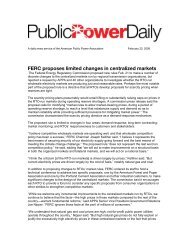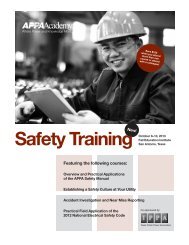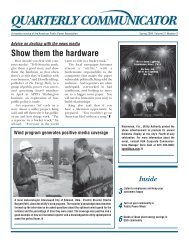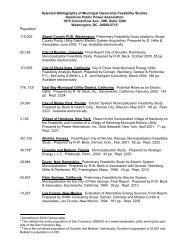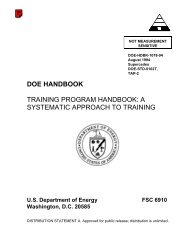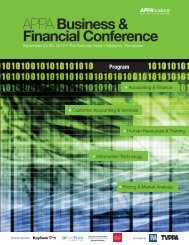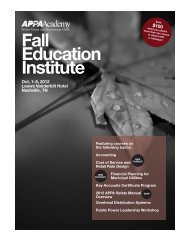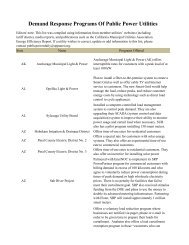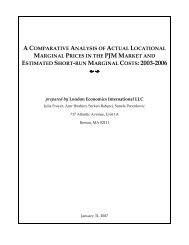Safeguarding Classified and Sensitive But Unclassified Information ...
Safeguarding Classified and Sensitive But Unclassified Information ...
Safeguarding Classified and Sensitive But Unclassified Information ...
You also want an ePaper? Increase the reach of your titles
YUMPU automatically turns print PDFs into web optimized ePapers that Google loves.
In this case, all associated equipment can then be stored in a GSA Approved container without<br />
the need for an approved open storage area. However, JRIES-S/CWIN must be activated only in<br />
a room/area equipped with a lockable door <strong>and</strong> where access is restricted to only cleared<br />
personnel. Contact DHS OS/ASD for additional guidance.<br />
Protection of Combinations to Security Containers, Cabinets, Vaults <strong>and</strong> Closed Areas<br />
The combination to containers used for the storage of classified information are themselves<br />
classified at the highest level of the information stored therein <strong>and</strong> must be protected accordingly.<br />
Only a minimum number of authorized persons with the appropriate level security clearance shall<br />
have knowledge of combinations to authorized storage containers. Containers shall bear no<br />
external markings indicating the level of classified material authorized for storage. Combinations<br />
will be annotated on a St<strong>and</strong>ard Form 700 (SF 700), “Security Container <strong>Information</strong>,” <strong>and</strong> the<br />
DHS OS/ASD will be contacted for additional guidance on the appropriate location <strong>and</strong> methods<br />
to store the completed form. The SF 700 will not be stored in the same safe that bears the<br />
combination. Combinations shall not be written down in any other manner <strong>and</strong> storage of a<br />
combination outside of an approved storage location constitutes a security violation.<br />
A record of the names of persons having knowledge of the combinations shall be maintained.<br />
Security containers, vaults, cabinets, <strong>and</strong> other authorized storage containers shall be kept<br />
locked when not under the direct supervision of an authorized person.<br />
The combination shall be safeguarded <strong>and</strong> marked in accordance with the highest classification<br />
of the material authorized for storage in the container. Superseded combinations shall be<br />
destroyed.<br />
Changing Combinations<br />
Combinations are to be changed by persons having an appropriate security clearance, who are<br />
authorized access to the contents of the container, <strong>and</strong> who have received instructions on how to<br />
change them. Contact DHS OS/ASD when assistance or guidance is needed.<br />
Combinations shall be changed as follows:<br />
• When an approved container is first placed in use for the storage of classified material.<br />
• Upon termination of employment or reassignment of any person having knowledge of the<br />
combination, or when the clearance granted to any such person has been withdrawn,<br />
suspended, or revoked.<br />
• Upon compromise or suspected compromise of a container or its combination, or<br />
discovery of a container left unlocked <strong>and</strong> unattended.<br />
• At least every two years<br />
End of Day Security Checks<br />
Rooms/areas that store classified information shall establish a system of security checks at the<br />
close of each working day to ensure that all classified information <strong>and</strong> security containers have<br />
been appropriately secured.<br />
Facilities that operate multiple work shifts shall perform the security checks at the end of the last<br />
working shift in which classified information had been removed from storage for use. The checks<br />
are not required during continuous 24-hour operations.<br />
15



